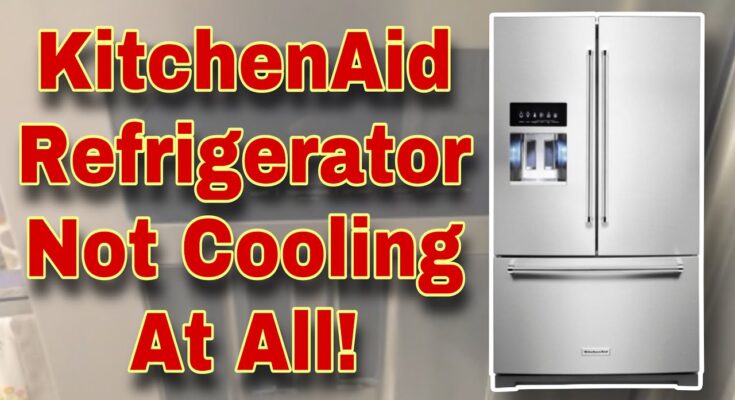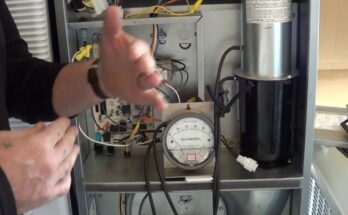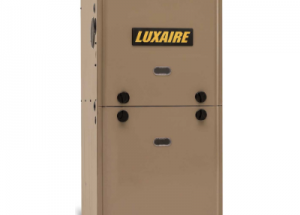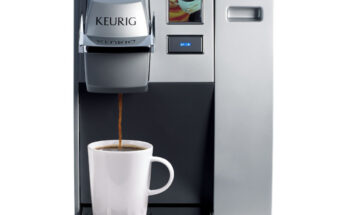For Kitchenaid Refrigerator Troubleshooting, check the power supply and temperature settings first. Inspect the condenser coils for cleanliness.
Kitchenaid refrigerators are reliable, but issues can arise. Common problems include cooling inefficiencies, unusual noises, and water leakage. Regular maintenance and proper usage can prevent many of these issues. Simple troubleshooting steps often resolve minor problems without needing professional help.
Knowing how to identify and address common issues can extend the life of your refrigerator. Basic troubleshooting involves checking the power supply, ensuring correct temperature settings, and cleaning the condenser coils. These steps can save time and money. For more complex issues, consulting the user manual or contacting customer support is advisable.
Common Issues
Kitchenaid refrigerators are reliable, but sometimes issues arise. Understanding common problems can help you troubleshoot effectively. Below are some frequent issues users face.
Temperature Fluctuations
Temperature fluctuations can spoil your food. It’s essential to address this problem quickly. Here are some possible causes:
- Dirty Condenser Coils: Dusty coils can cause overheating. Clean them regularly.
- Faulty Thermostat: A broken thermostat can’t regulate temperature. Replace if needed.
- Blocked Vents: Ensure nothing blocks the air vents. This ensures proper airflow.
- Improper Door Seals: Check the door gaskets. Replace if they are worn out.
Unusual noises can indicate various issues with your refrigerator. Identifying the type of noise can help diagnose the problem:
| Noise Type | Possible Cause | Solution |
|---|---|---|
| Buzzing | Compressor or fan issues | Check and possibly replace the fan or compressor |
| Clicking | Start relay failure | Inspect and replace the start relay |
| Rattling | Loose parts or components | Tighten or secure loose parts |
| Humming | Normal operation | No action needed if consistent |
Addressing these issues promptly can extend the life of your Kitchenaid refrigerator. Keep an ear out for unusual noises and act quickly.

Credit: m.youtube.com
Temperature Problems
One of the most common issues with Kitchenaid refrigerators is temperature problems. This can affect food storage and energy efficiency. Below, we will discuss two main temperature issues: when the refrigerator is too warm and when the freezer is not cold enough.
Refrigerator Too Warm
If your refrigerator is too warm, several factors could be at play. Start by checking the temperature setting. It should be set between 37°F and 40°F. If it’s set correctly, look at the following:
- Air Vents: Ensure vents are not blocked by food items.
- Door Seals: Check if seals are clean and not damaged.
- Condenser Coils: Clean the coils if they are dusty.
If these steps do not resolve the issue, you may need to inspect the thermostat or call a technician.
Freezer Not Cold Enough
If your freezer is not cold enough, it could spoil your frozen food. Here are a few troubleshooting steps:
- Temperature Setting: Ensure the setting is at 0°F.
- Overloading: Do not overload the freezer; allow air to circulate.
- Frost Buildup: Check for excessive frost and defrost if needed.
Still having problems? It could be a faulty defrost timer or a malfunctioning fan. Consider professional help for these issues.
Water And Ice Dispenser Issues
Having issues with your Kitchenaid refrigerator’s water and ice dispenser? This section will help you troubleshoot common problems. We’ll cover No Water Flow and Ice Maker Not Working. Let’s dive into each issue and find the solution.
No Water Flow
If the water dispenser on your Kitchenaid refrigerator isn’t working, check these common issues:
- Water Filter: A clogged water filter can block the flow. Replace the filter if it’s been in use for more than six months.
- Water Supply Line: Ensure the water supply line is not kinked or blocked. A damaged line can stop water from flowing.
- Water Inlet Valve: The valve controls the water flow into the refrigerator. If faulty, replace it to restore water flow.
- Dispenser Control Board: The control board manages the dispenser functions. A malfunctioning board may need a professional replacement.
Ice Maker Not Working
If your ice maker has stopped producing ice, consider these steps:
- Check the Ice Maker: Ensure the ice maker is turned on. A switch or lever usually controls it.
- Inspect the Ice Tray: Remove the ice tray and check for blockages. Clean any ice build-up that might be blocking the mechanism.
- Water Supply: Similar to the water dispenser, ensure the water supply is connected and flowing.
- Temperature Settings: The freezer temperature should be set between 0°F and 5°F. Adjust if necessary.
- Ice Maker Assembly: If none of the above steps work, the entire ice maker assembly may need to be replaced.
By following these steps, you can resolve most water and ice dispenser issues with your Kitchenaid refrigerator. Regular maintenance helps keep the dispenser in top working condition.
Electrical And Power Concerns
Electrical and power issues can disrupt your KitchenAid refrigerator. Identifying and troubleshooting these problems ensures your appliance runs smoothly. This section addresses common electrical and power concerns, offering solutions to keep your refrigerator functioning optimally.
Refrigerator Not Turning On
If your KitchenAid refrigerator is not turning on, check the power supply. Ensure the refrigerator is plugged into a working outlet. You can test the outlet by plugging in another device.
Next, inspect the power cord for any signs of damage. If the cord looks frayed or broken, it may need replacing. A damaged power cord can prevent the refrigerator from receiving power.
Also, check the circuit breaker. Sometimes, the breaker may trip, cutting off power to the refrigerator. Reset the breaker and see if the refrigerator powers on.
Frequent Power Cycling
Frequent power cycling can be frustrating. This issue can stem from several factors. First, ensure the temperature settings are correct. Incorrect settings can cause the refrigerator to cycle too often.
Next, inspect the condenser coils. Dirty coils can lead to frequent cycling. Clean the coils regularly to maintain efficiency.
Additionally, check the door seals. Poor seals allow warm air to enter, causing the refrigerator to work harder. Replace any damaged seals to improve performance.
If these steps do not resolve the issue, consider contacting a professional technician. They can diagnose and fix more complex problems.
| Issue | Possible Cause | Solution |
|---|---|---|
| Refrigerator Not Turning On | Power Supply | Check outlet and power cord |
| Frequent Power Cycling | Temperature Settings | Adjust settings |
| Frequent Power Cycling | Dirty Condenser Coils | Clean coils |
| Frequent Power Cycling | Poor Door Seals | Replace seals |
Door Seal And Alignment
Keeping your KitchenAid refrigerator in top condition requires regular maintenance. One key area to focus on is the door seal and alignment. Properly sealed doors ensure efficient cooling and prevent energy loss. Correct alignment helps in maintaining the refrigerator’s overall performance.
Inspecting Door Seals
The door seals, or gaskets, are vital for maintaining internal temperature. Follow these steps to inspect them:
- Open the refrigerator door.
- Look for cracks, tears, or gaps in the seal.
- Run your hand around the seal to feel for air leaks.
- Close a piece of paper in the door. Try pulling it out.
If the paper slides out easily, the seal may need replacing.
Clean the seals with warm soapy water to remove dirt. This ensures a proper seal.
Adjusting Door Alignment
Proper door alignment prevents cooling issues and ensures the door closes correctly. To adjust the alignment:
- Locate the adjustment screws at the top or bottom of the door.
- Use a screwdriver to turn the screws clockwise or counterclockwise.
- Adjust until the door is level and aligned with the refrigerator body.
- Check the door seal again after adjusting.
If the door still misaligns, inspect the hinges for wear. Replace if necessary.
Regularly check door seals and alignment to keep your KitchenAid refrigerator running efficiently.
| Task | Steps |
|---|---|
| Inspecting Door Seals |
|
| Adjusting Door Alignment |
|
Keep your KitchenAid refrigerator in top condition by addressing door seal and alignment issues promptly.

Credit: www.kitchenaid.com
Unusual Noises
Experiencing strange sounds from your Kitchenaid refrigerator can be troubling. These noises could indicate underlying issues that need attention. Understanding these sounds helps in troubleshooting and maintaining your appliance. This section covers two common noises: buzzing sounds and rattling noises.
Buzzing Sounds
Buzzing sounds often come from the compressor or the ice maker. This noise can be constant or intermittent. Here are a few common reasons:
- Compressor Running: The compressor might be working harder than usual.
- Ice Maker: The ice maker could be filling with water.
- Fan Motor: The fan motor could be dirty or malfunctioning.
If the buzzing persists, check the compressor and fan motor. Clean them if they appear dirty. If cleaning does not help, consider contacting a professional.
Rattling Noises
Rattling noises can be annoying and often have simple causes. Here are the most common sources of rattling:
- Loose Items: Items inside the refrigerator might be vibrating.
- Condenser Coils: The condenser coils might be dirty or loose.
- Water Line: The water line might be rattling against the refrigerator.
To fix rattling noises, check for loose items and secure them. Clean or secure the condenser coils and the water line. If the noise persists, consider seeking professional help.
Interior Light Issues
KitchenAid refrigerators are reliable, but sometimes, interior light issues can occur. This can be frustrating when you need to see inside your fridge. Let’s explore common problems and solutions.
Light Not Turning On
The light not turning on is a common issue. Follow these steps to fix it:
- Check if the fridge is plugged in.
- Ensure the light bulb is not burnt out.
- Inspect the door switch for any damage.
- Test the light socket with a new bulb.
If these steps do not work, you might need to call a technician.
Flickering Light
A flickering light can be annoying and may indicate a problem. Here are some steps to troubleshoot:
- Check the bulb is securely screwed in.
- Inspect the bulb for any visible damage.
- Replace the bulb with a new one.
- Ensure the door switch is functioning correctly.
If the flickering continues, the issue might be with the wiring or control board. Professional help may be required.

Credit: www.kitchenaid.com
Maintenance Tips
Keeping your KitchenAid refrigerator in top shape ensures it runs efficiently. Regular maintenance can prevent costly repairs and extend the lifespan of your appliance. Here are some essential maintenance tips to help you keep your KitchenAid refrigerator in excellent condition.
Cleaning Coils
Dusty coils can cause your refrigerator to work harder. This can lead to higher energy bills and potential malfunctions. Follow these steps to clean the coils:
- Unplug the refrigerator from the power source.
- Locate the coils, usually found at the back or bottom.
- Use a coil brush or a vacuum to remove dust and debris.
- Wipe the area around the coils with a damp cloth.
- Plug the refrigerator back in.
Cleaning the coils every six months ensures optimal performance. This simple task can save you money and headaches down the line.
Defrosting Freezer
Ice buildup in the freezer can reduce efficiency and storage space. Defrosting your freezer regularly is crucial. Here’s how to do it:
- Remove all items from the freezer.
- Unplug the refrigerator and open the freezer door.
- Place towels around the base to catch melting ice.
- Let the ice melt naturally or use a fan to speed up the process.
- Once the ice has melted, clean the interior with a mixture of warm water and mild soap.
- Dry the interior thoroughly before plugging the refrigerator back in and returning the items.
Defrosting the freezer twice a year helps maintain efficiency. It also keeps your food stored at the proper temperature.
Frequently Asked Questions
Where Is The Reset Button On A Kitchenaid Refrigerator?
The reset button on a KitchenAid refrigerator is usually located inside the fridge, near the temperature control panel. Check the user manual for exact placement.
How Do I Run A Diagnostic On My Kitchenaid Refrigerator?
Press and hold the “Energy Saver” and “Alarm” buttons for 10 seconds. The display will show diagnostic codes. Consult your manual for code meanings.
Why Is My Kitchenaid Refrigerator Suddenly Not Working?
Your KitchenAid refrigerator may not work due to power issues, a tripped circuit breaker, or a faulty thermostat. Check for blockages in vents and ensure the door seals properly. If problems persist, consult the user manual or contact a technician.
What Is The Most Common Fridge Failure?
The most common fridge failure is a malfunctioning thermostat. This issue can cause improper cooling or freezing. Regular maintenance can prevent such problems.
Conclusion
Addressing common Kitchenaid refrigerator issues can save time and money. Regular maintenance helps avoid future problems. Follow these troubleshooting tips to keep your fridge running efficiently. For persistent issues, consult a professional technician. A well-maintained refrigerator ensures your food stays fresh and safe.
Keep these tips handy for a hassle-free kitchen experience.



